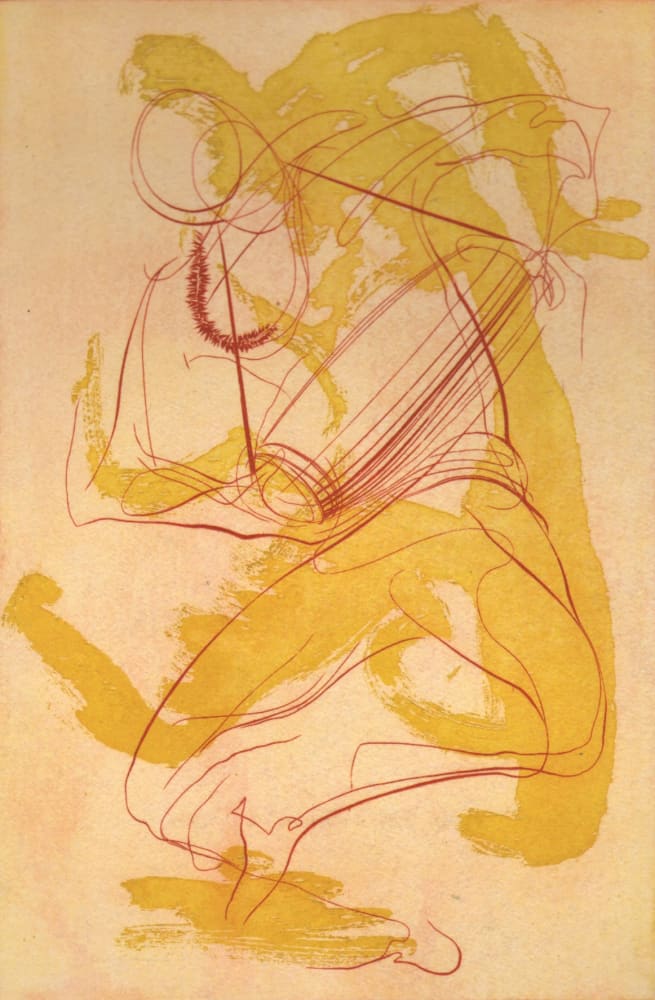Born in New York, Christine Engler was the only child of Gustave and Grace Engler and had a working-class upbringing, living just north of Morningside Park. Her mother was a schoolteacher and her father—though he worked full-time as a waiter to support his family—was a passionate photographer and inventor. Engler attended Birch Wathen School, an independent school in Manhattan, and her art teacher there, Victoria Hudson Huntley, played a significant role in fostering her artistic development and career ambitions. After graduation, Huntley arranged for Engler to teach art at Birch Wathen and, in the mid-1940s, she followed Huntley to Pomfret, Connecticut. (Huntley taught at the Pomfret School and Engler at the Rectory School.) Engler also studied at the Art Students League, primarily with Arthur Lee and William McNulty. She began exhibiting intaglio prints in the mid-1940s, showing mostly with the Society of American Etchers, the forerunner to the Society of American Graphic Artists. By 1947 Engler found her way to Atelier 17, where she mastered engraving under Hayter. Her prints were largely representational, focusing on circus imagery, nature, animals, and dancers. She exhibited them widely during the late 1940s and mid-1950s and earned recognition through numerous purchase awards and a Tiffany Foundation grant in 1950. Engler formed a close friendship with Hayter, and he wrote the introductory text for her first solo exhibition of engravings and etchings in 1957 at the Brooks Memorial Art Gallery (now the Memphis Brooks Museum of Art). He praised her work for its technical accomplishment: “It is … quite difficult to execute such lines as Christine Engler employs… . When such results are seen there is only an impression of ease … the lines seem inevitable … they just seem to have come that way.” Sometime in the late 1950s, Engler married Edward S. Rubin, a tobacco and pipe salesman who had served in the Navy. After the birth of their only child in 1961, Engler gave up printmaking but continued creative work, producing small-scale metal and clay sculptures. Engler and Hayter saw each other again in the early 1980s, when her daughter was studying abroad at Parsons Paris, and this reunion was quite meaningful to Engler.
We thank Christina Weyl for this biographical information.

